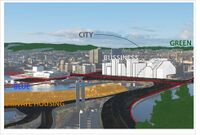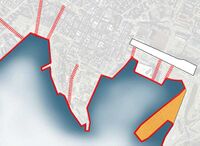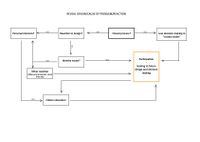LED 2016 Group G Landscape Democracy Challenge 1: Difference between revisions
| (3 intermediate revisions by the same user not shown) | |||
| Line 42: | Line 42: | ||
== References == | == References == | ||
*... | * Hester, R. (2006). ''Design for Ecological Democracy.'' Cambridge: The MIT Press. | ||
== Other resources == | == Other resources == | ||
* Nordregio (n.d.). Bruising high-rise debates in Oslo | * Nordregio (n.d.). ''Bruising high-rise debates in Oslo.'' Available from: http://www.nordregio.se/en/Metameny/About-Nordregio/Journal-of-Nordregio/Journal-of-Nordregio-2010/Special-issue-of-the-Journal-of-Nordregio--only-available-in-digital-format/Bruising-high-rise-debates-in-Oslo/ (Obtained 16.05.16). | ||
* '' | * Kolstad, S. (2009). ''Bjørvika-avtalen står på spill.'' Available from: http://www.aftenposten.no/kultur/--Bjorvika-avtalen-star-pa-spill-235027b.html (Obtained 16.05.16). | ||
---- | |||
Latest revision as of 08:48, 19 June 2016
Planning Oslo - The Blue, the Green and the city in between
| "Barcode" | ||
| Oslo, Norway | ||
| Tonje Cecilie Stordalen | ||

| ||
Why is this case relevant?
Oslo is a city, not unlike many others, that in recent years has experienced strong growth. It does not seem to be waning, and this places high demands on housing and infrastructural development. In previous phases, the City Council has met strong adversities from the population in cases where they have tried to move "marka border” - the metered boundary between the city and the forest ridge. It has been clear for many years that both the green forest ridge behind the city and the views of the bay and access to water has been important for the identity of the cities inhabitants. The enthusiasm was great when the City Council approved a new plan to work toward making Oslo a fjord city in 2000. The residents looked forward to a more accessible water front, a blue-green profile with a balance between renewal and preservation, social housing and a project focusing on user involvement in Bjørvika, the new heart of Oslo. But some argue that the development that has happened bears little, or no resemblance, to the plans that were envisioned and the reactions have been many. I chose this case because I think it is interesting how participation and the preservation of local identity and sacred places was so vital to the plan before it started and how it all seemed to be washed away because of external influences and private constructors.
Representation of your observations
Reflection
What are the major challenges for changing the situation?
Barcode sparked a fierce public debate in 2006 and 36,000 signatures were delivered to the Plan and Building Agency. A survey done by one of the local newspapers showed that over 70% of Oslo's population was against development in Bjørvika. Many people feel that the development on several points have been totally changed from from what the politicians outlined in 2000 and some have even stated that the city government practically have been ruled by property companies and the Plan and Building Agency. It seems to me that the main challenge is that the process has been so closed and "secret" that residents in Oslo react more to the process than on the design. There is much good at To some extent, Barcode deliver what it was supposed to; a more vibrant city by Oslos waterfront. However, because of the lack of social housing, unobstructed view from the city to the bay, not securing the sight lines from the medieval park and the absence of involvement in the planning and the lack of recognition of protests many people do not welcome Barcode as a feature of “the new Oslo”. This project is in desperate need for some major damage control, and I think the major challenge for changing the situation is getting the opponents of the plan to acknowledge what is already built while at the same time making sure that future construction is done in a way that local residents can relate to.
What could be a starting point for democractically-based change?
A good starting point would be to reveal the origin and cause of the reactions and the aforementioned problems. If the cause is a closed process further reactions can be avoided by facilitating more participation and by politicians taking less decisions in closed rooms. However, it is not enough to perform participation, it is also important to use the knowledge that comes out of these methods actively in the efforts to build a new city. At the same time it will be important to set new goals for Bjørvika and on a general basis for all of Oslo. The city is not the same as 15 years ago when the Fjord City plan was decided and it would be important to educate city residents about urban development and sustainable city conditions. Bjørvika has been constructed so quickly that Oslo has not had time to adjust or adapt to this identity shift. There is a need to do this now.
References
- Hester, R. (2006). Design for Ecological Democracy. Cambridge: The MIT Press.
Other resources
- Nordregio (n.d.). Bruising high-rise debates in Oslo. Available from: http://www.nordregio.se/en/Metameny/About-Nordregio/Journal-of-Nordregio/Journal-of-Nordregio-2010/Special-issue-of-the-Journal-of-Nordregio--only-available-in-digital-format/Bruising-high-rise-debates-in-Oslo/ (Obtained 16.05.16).
- Kolstad, S. (2009). Bjørvika-avtalen står på spill. Available from: http://www.aftenposten.no/kultur/--Bjorvika-avtalen-star-pa-spill-235027b.html (Obtained 16.05.16).



